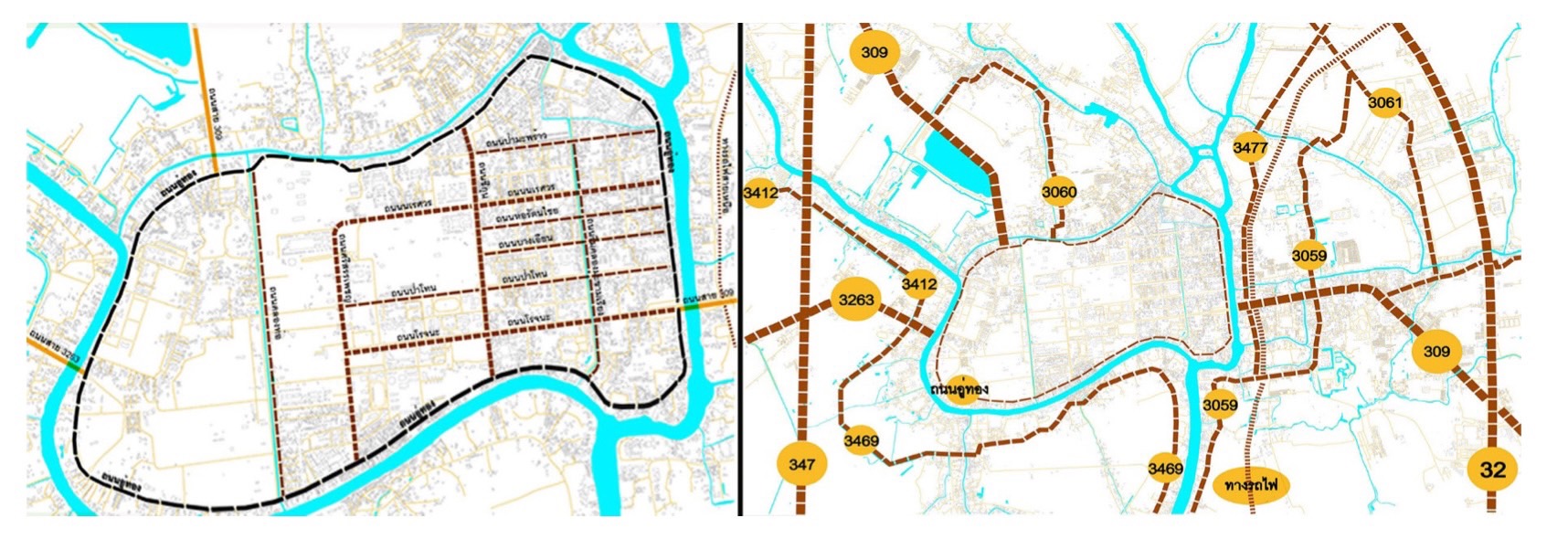Architectural Documentation: A Case Study of Architectural Analysis in Tourism Context of Ancient Ayutthaya Island Area
Main Article Content
Abstract
This research article presents guidelines for developing the process of learning architecture. The method focuses on studying and analyzing the physical characteristics, context, tourist information and architectural developments in buildings related to the tourism industry such as, museums, hotels, restaurants, retails, café, and etc. of Ayutthaya city island and its neighborhood. The learning process are revealed to 4 steps as follows: 1) Study the basic information of Ancient Ayutthaya city island, such as “The image of the city”, tourist behavior, etc. (from lesson and knowledge); 2) The definition of criteria and theme of the case study 3) Study from field trip and site survey by documenting the physical features and architectural dimensions through data storage in various media, such as photographs, architectural drawings; 3) Analyzing architectural concepts and site/ contexts. Then, integrating knowledge from lessons and field trips to the results of “Architectural Documentation”. Moreover, the study process found that there were 4 approaches to designing and promoting the potential of architecture in the context of cultural tourism: 1) Concepts and architectural development patterns in issues related to the potential of the area, context, behavior, building characteristic, and form and space design 2) Guidelines for architectural documentation 3) The identity of Modern Thai Architecture 4) Integration with other fields, such as conservation, renovation or building formed. Finally, it also contributes to the promotion of academic knowledge that will benefit the development of tourism in historical cities and related cultural areas.
Downloads
Article Details

This work is licensed under a Creative Commons Attribution-NonCommercial-NoDerivatives 4.0 International License.
All material is licensed under the terms of the Creative Commons Attribution 4.0 International (CC-BY-NC-ND 4.0) License, unless otherwise stated. As such, authors are free to share, copy, and redistribute the material in any medium or format. The authors must give appropriate credit, provide a link to the license, and indicate if changes were made. The authors may do so in any reasonable manner, but not in any way that suggests the licensor endorses you or your use. The authors may not use the material for commercial purposes. If the authors remix, transform, or build upon the material, they may not distribute the modified material, unless permission is obtained from JARS. Final, accepted versions of the paper may be posted on third party repositories, provided appropriate acknowledgement to the original source is clearly noted.
References
Issarathumnoon, W. (2018). Yan chumchonkao nai krungthep: niyam rae botbat naikarn chatkan moradok watthanatham karn thot botrian jak yan banglumpoo – baan panthom (THAI). Bangkok: Faculty of Architecture, Chulalongkorn University.
Kulachol, K. (2002). Karn okbaep chumchon muang khue aria: karn tidtam ha khumtop nairob sisib pi (THAI). Bangkok: Faculty of Architecture, Silpakorn University.
Khanjanusthith, P. (2009). Karn anurak moradok sinlapa sathapattayakam lae chumchon (THAI). Bangkok: Chulalongkorn University Press.
Lynch, K. (1960). The image of the city. Massachusetts: MIT Press.
Ministry of Culture & Silpakorn University. (2006). Naeothang karn chatkan phumithat watthanatham (THAI). Bangkok: Amarin Printing & Publishing.
Tourism Authority of Thailand. (1997). Sarup khumue karn pattana laengthongthiao thangdan kaiyaphap: ekkasan prakob kanwangphaen lem thi sib (THAI). Bangkok: Tourism Authority of Thailand.
Uluchadha, P. (2015). Ha duean klang sak it poon ti Ayutthaya (4th Ed.) (THAI). Bangkok: Muang Boran Press. Vallibhotama, S. & Songsiri, W. (2017). Lum chaophraya: Rak ngao heang siam prathet (THAI). Bangkok: Lek – Prapai Viriyahpant Foundation.


